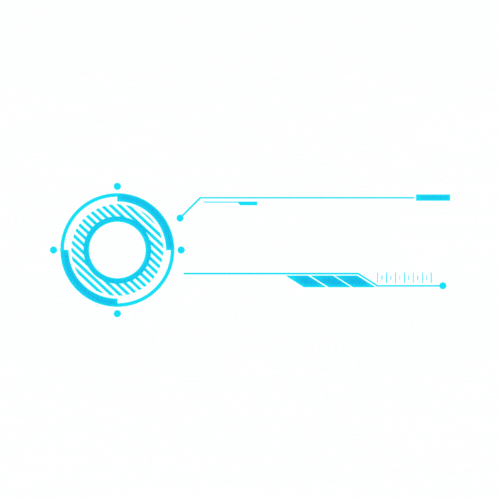Biography of "Willem Einthoven": A Journey of Innovation and Resilience
Introduction
Discover the inspiring life of Willem Einthoven, a remarkable Dutch physician and physiologist who revolutionized the field of cardiovascular medicine with his invention of the electrocardiogram (ECG). From humble beginnings to overcoming numerous challenges, Einthoven’s perseverance and dedication led to groundbreaking advancements in the understanding and diagnosis of heart diseases. This biography explores his journey, highlighting key moments, notable inventions, and the lessons we can learn from his determination, innovation, and resilience. Dive into the extraordinary life of Willem Einthoven and be inspired by his lasting legacy that continues to influence and motivate generations.
Common challenges or problems associated with Willem Einthoven
As a pioneer in the field of cardiovascular medicine, Willem Einthoven faced several challenges during his career. Some common issues or problems he encountered include:
-
Lack of technology: During Einthoven’s early years, the technology required to study the heart’s electrical activity was limited. He had to develop innovative techniques and devices to overcome this obstacle.
-
Understanding and interpreting data: Interpreting the intricate patterns obtained from the ECG required vast knowledge and expertise. Einthoven had to spend years refining his methods and understanding the significance of each wave and complex.
-
Skepticism from the medical community: Initially, many physicians were skeptical of the ECG’s capabilities and doubted its usefulness in diagnosing heart conditions. Einthoven had to overcome this skepticism and demonstrate the value of his invention through extensive research and clinical trials.
Importance of Willem Einthoven’s work and legacy
Willem Einthoven’s work was of immense importance and continues to have a lasting impact. His invention of the electrocardiogram revolutionized the field of cardiovascular medicine in several ways:
-
Diagnostic tool: The ECG provided healthcare professionals with a non-invasive and objective method of assessing cardiovascular health. It enabled the diagnosis of various heart conditions, including arrhythmias, heart attacks, and congenital abnormalities.
-
Advancements in treatment: The ECG’s ability to accurately diagnose heart conditions allowed for more targeted and effective treatment strategies. Einthoven’s work paved the way for the development of life-saving interventions, such as pacemakers and defibrillators.
-
Foundation for further research: The ECG served as the foundation for future research in the field of cardiology. Einthoven’s pioneering work opened new avenues for studying the heart’s electrical activity, leading to a deeper understanding of cardiovascular diseases.
Willem Einthoven’s legacy extends beyond his inventions. His commitment to meticulous research, dedication to advancing medical knowledge, and perseverance in the face of skepticism and challenges serve as an inspiration to researchers, physicians, and innovators across the globe.
Key achievements and contributions
Willem Einthoven’s major achievements and contributions include:
-
Invention of the string galvanometer: Einthoven developed the string galvanometer, a highly sensitive instrument that could detect and amplify the electrical signals generated by the heart. This invention allowed for precise measurements of the heart’s electrical activity and formed the basis of the electrocardiogram.
-
Development of the electrocardiogram (ECG): Using the string galvanometer, Einthoven recorded the first human electrocardiogram in 1902. His pioneering work led to the development of standardized ECG techniques and terminology, which are still widely used in modern cardiology.
-
Classification of ECG waveforms: Einthoven classified the different waveforms observed in the ECG and established their correlation with specific cardiac events. His classification system, including the P, Q, R, S, and T waves, provided a standardized framework for interpreting ECG readings.
-
Publication of "The Theory of Galvanometer": In 1906, Einthoven published his seminal work, "The Theory of Galvanometers," which laid out the mathematical principles underlying his string galvanometer and the ECG. This publication further solidified Einthoven’s contributions to the field of cardiovascular medicine.
-
Nobel Prize in Physiology or Medicine: In recognition of his groundbreaking work, Willem Einthoven was awarded the Nobel Prize in Physiology or Medicine in 1924. The prize acknowledged his invention of the ECG and the significant impact it had on the diagnosis and understanding of heart diseases.
Lessons learned from Willem Einthoven
Willem Einthoven’s life and work teach us valuable lessons:
-
Perseverance and resilience: Despite facing challenges and skepticism, Einthoven persisted in his research, refining his techniques until he achieved significant breakthroughs. His dedication serves as a reminder that progress often requires perseverance in the face of obstacles.
-
Innovation and adaptability: Einthoven’s invention of the string galvanometer and the ECG showcased both his ingenuity and adaptability to overcome technological limitations. He continuously sought innovative solutions to advance his research.
-
Collaboration and knowledge sharing: Einthoven actively collaborated with other researchers and physicians, sharing his findings and promoting open discourse. His inclusive approach facilitated the spread of knowledge and advanced the field of cardiology.
-
Commitment to patient care: Einthoven’s work was driven by a desire to improve patient care and outcomes. His focus on developing a diagnostic tool that would benefit both physicians and individuals with heart conditions demonstrates the importance of patient-centered research.
Conclusion
Willem Einthoven’s remarkable journey in the field of cardiovascular medicine showcases his innovation, resilience, and dedication to advancing medical knowledge. His invention of the electrocardiogram revolutionized the diagnosis and treatment of heart diseases, leaving a lasting impact on the field. Einthoven’s life teaches us valuable lessons about perseverance, innovation, collaboration, and patient-centered care. His legacy continues to inspire researchers and physicians worldwide, reminding us of the transformative power of determination and scientific exploration.
References:
- "Willem Einthoven: The Invention of the Electrocardiogram." NobelPrize.org. https://www.nobelprize.org/prizes/medicine/1924/einthoven/biographical/
- Mary Ann Clark, "Willem Einthoven (1860–1927)." Embryo Project Encyclopedia. https://embryo.asu.edu/pages/willem-einthoven-1860-1927
- Joseph A. Hill and Agustin Escobar, "The Uncommon Contributions of Willem Einthoven and Lesser-Known ECG Pioneers." The American Journal of Medicine. https://doi.org/10.1016/j.amjmed.2020.06.013

